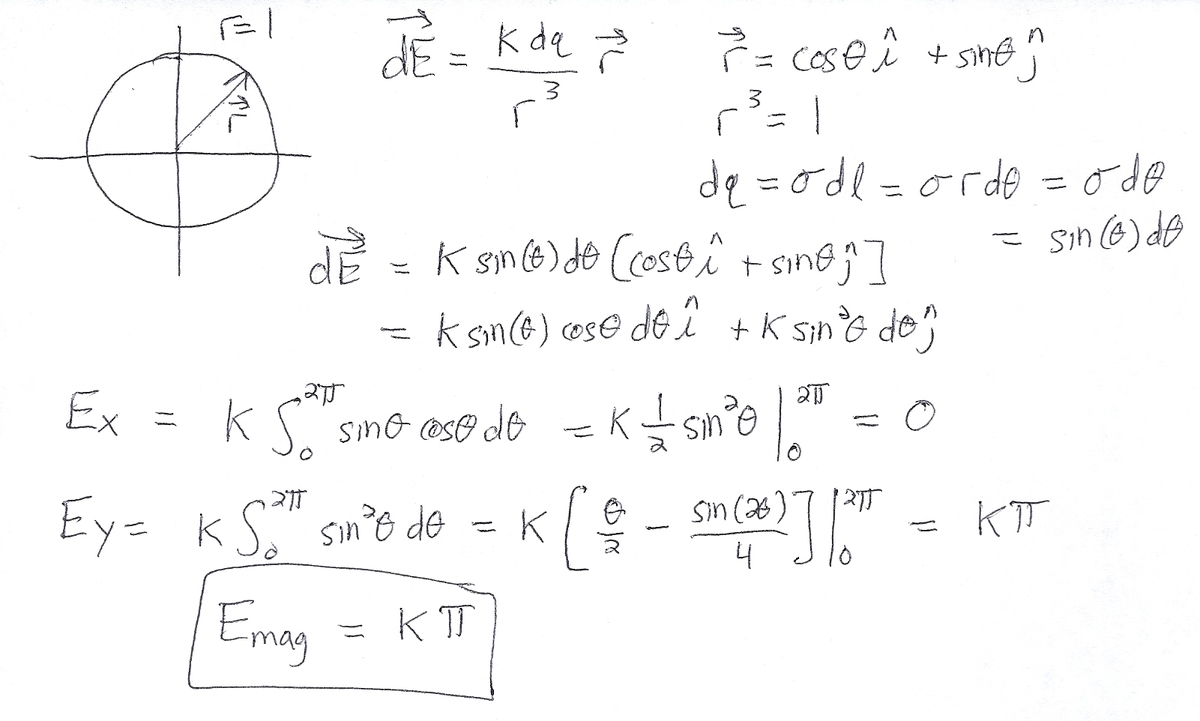Imperfect Symmetry
Charge is unevenly distributed over a unit circle centered on the origin . The linear charge density is .
The magnitude of the electric field at the origin can be expressed as , where is the Coulomb constant. Enter the value of , given to two decimal places.
Details and Assumptions:
Assume standard SI units for all quantities.
Note that is negative for some values of .
The answer is 3.14.
This section requires Javascript.
You are seeing this because something didn't load right. We suggest you, (a) try
refreshing the page, (b) enabling javascript if it is disabled on your browser and,
finally, (c)
loading the
non-javascript version of this page
. We're sorry about the hassle.
